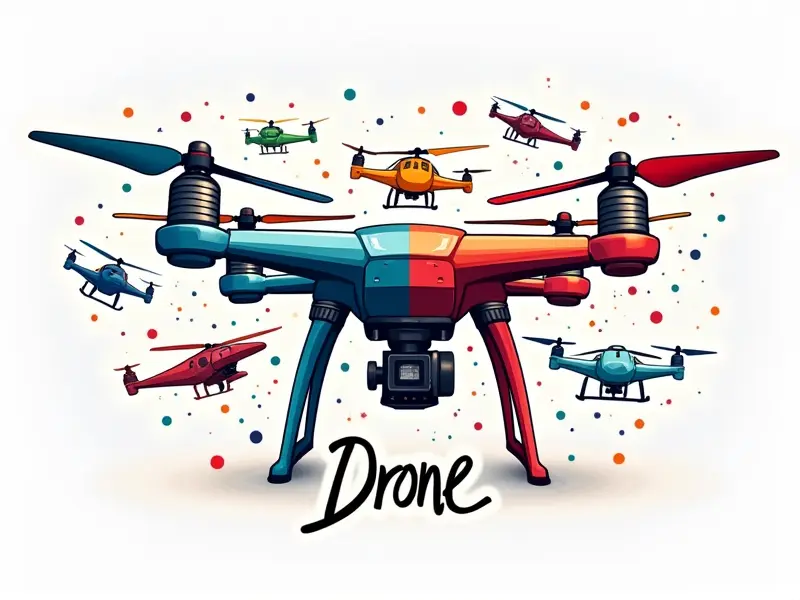Best drone camera settings?

The Best Drone Camera Settings for Optimal Performance
Drone photography and videography have become increasingly popular, offering enthusiasts a unique perspective on the world around us. Whether you're an FPV racing drone pilot or an RC airplane hobbyist, understanding how to optimize your camera settings is crucial for capturing stunning aerial footage. This comprehensive guide will walk you through the best practices for configuring your drone's camera settings.
Optimal Camera Settings for FPV Racing Drones
FPV racing drones require a fast frame rate and low latency to ensure that pilots can react quickly during races. Here are some key settings:
- Frame Rate: Aim for at least 60 frames per second (fps) to reduce motion blur.
- Resolution: Opt for a lower resolution like 720p or 1080p to balance between image quality and latency.
- Bitrate: Higher bitrate settings can improve video quality but may increase lag. Aim for around 5 Mbps.
Best Camera Presets for RC Quadcopter Photography
RC quadcopters are versatile and can be used for both photography and videography. Here’s how to optimize your camera:
- ISO: Keep ISO as low as possible (e.g., 100-400) to minimize noise.
- Shutter Speed: Use a faster shutter speed (1/500 or higher) to freeze motion and reduce blur.
- White Balance: Set the white balance manually for consistent color accuracy across different lighting conditions.
Maximizing Image Quality on RC Helicopter Cameras
RC helicopters can be challenging due to their unique flight dynamics, but with the right settings, you can capture high-quality images:
- Aperture: Use a wider aperture (lower f-number) for shallower depth of field and more light.
- Image Stabilization: Enable image stabilization to reduce shake caused by vibrations.
- Exposure Compensation: Adjust exposure compensation (+/- EV) to balance between bright skies and darker ground features.
Ideal Camera Configurations for RC Airplanes
RC airplanes offer a smooth, stable platform for aerial photography. Here are some tips:
- Focus Mode: Use continuous focus (AF-C) to keep moving subjects sharp.
- Image Size: Choose RAW or the highest JPEG quality setting for maximum detail and flexibility in post-processing.
- Burst Shooting: Enable burst shooting mode to capture multiple frames per second, increasing your chances of getting a perfect shot.
Quick Adjustments for Crystal Clear FPV Video Streams
Making quick adjustments during flight can significantly enhance the clarity and quality of your video feed:
- Gain Control: Lower gain to reduce noise in low-light conditions.
- Brightness: Adjust brightness settings for optimal visibility without overexposure.
- Contrast: Increase contrast slightly to improve definition and clarity.
Essential Drone Camera Setup Tips
Before taking off, ensure your drone camera is properly set up:
- Calibrate Sensors: Calibrate all sensors for accurate readings and smooth operation.
- Check Battery Levels: Ensure both the drone’s battery and camera batteries are fully charged.
- Update Firmware: Keep your drone's firmware up-to-date to access new features and bug fixes.
Ultimate Guide to Drone Camera Exposure Settings
Mastery of exposure settings is key to capturing well-lit, balanced images:
- EV Compensation: Use EV compensation (+/-) to fine-tune the overall brightness.
- Auto-Exposure Bracketing (AEB): Enable AEB for multiple exposures in one shot.
- Manual Exposure Control: Take control of ISO, shutter speed, and aperture manually for precise adjustments.
Sharpness and Focus Tips for RC Airplane Drones
Achieving sharp focus is crucial for clear images:
- Focus Peaking: Use focus peaking to easily identify in-focus areas on the screen.
- Macro Mode: Enable macro mode for close-up shots with increased depth of field.
- Lens Quality: Invest in high-quality lenses that deliver sharp, clear images across all focal lengths.
Enhance Your Drone Videos with These Tips
Here are additional tips to elevate your drone video footage:
- Stabilization Techniques: Utilize gimbal stabilization for smooth, professional-looking videos.
- Lighting Conditions: Shoot during the golden hour (dawn and dusk) for soft, natural lighting.
- Composition Rules: Apply basic composition rules like rule of thirds to create visually appealing frames.
Essential Camera Tweaks for Stunning Aerial Footage
Making small tweaks can make a big difference in your aerial footage:
- Color Profiles: Experiment with different color profiles (e.g., Vivid, Neutral) to achieve the desired look.
- Lens Filters: Use polarizing or UV filters to enhance colors and reduce glare.
- Post-Processing: Utilize software like Adobe Lightroom for advanced editing capabilities.
Mastering Drone Camera Settings Quickly
To quickly master your drone camera settings, follow these steps:
- Start with Defaults: Begin by using the default settings and gradually tweak them as needed.
- Learn from Experts: Follow tutorials and guides from experienced pilots to gain insights into best practices.
- Practice Regularly: The more you practice, the better you’ll understand how different settings affect your footage.
Conclusion
Mastery of drone camera settings is essential for capturing high-quality aerial photography and videography. By following these tips and experimenting with various configurations, you can elevate your drone content to new heights. Whether you're flying FPV racing drones or RC airplanes, understanding how to optimize your camera settings will help you achieve stunning results every time.

